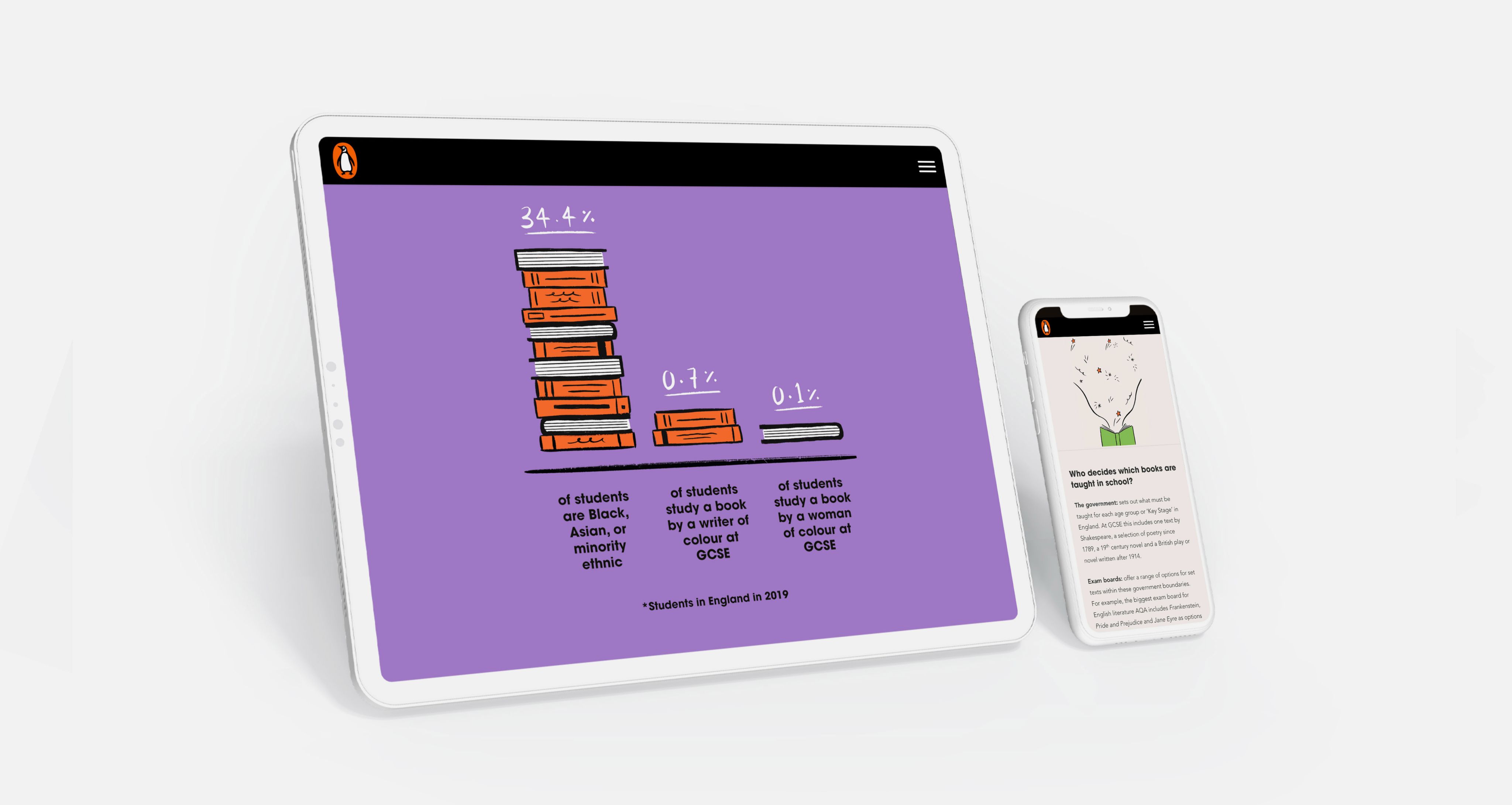How gated content works

Marketers have been building downloadable PDFs and sticking them behind a lead generation form for years. The idea is: if you offer your audience something valuable, they’ll be more than happy to share their name and email to gain access.
As a mechanism for lead generation and brand storytelling, gated content can work.
But lead generation gates are only as effective as the content behind them. If you’re still using PDFs to house your premium content, you aren’t sending your best.
In the guide below, we cover:
- What gated content is
- Types of gated content
- How it has changed
- When marketers should use gated content (and when you shouldn’t)
- 5 tips for creating premium gated content
- Why you shouldn’t create a PDF
- How to create gated content using Shorthand
We won't share any gated content examples in this post because, well, they're behind a gate! But if you're looking for examples of stunning gate-worthy — but fully open — content, then sign up for our newsletters. We'll send you the best digital content from around the web, every other week. Sign up here.
Start creating with Shorthand
It's the fastest way to publish beautifully engaging digital magazines, reports, internal comms, and more.
What is
gated content?

Gated content is a method of lead generation using digital content that’s hidden from readers until they complete a form.
To access gated content, readers complete a lead generation form on a landing page or popup datawall — usually asking for their name, email, and sometimes a few other pieces of contact information, such as a phone number. The form serves as a 'gate', and helps to generate an email list of subscribers and leads for the company that produced the content.
From there, qualified leads may be passed along to the sales team, where it can progress further down the sales funnel. Otherwise, they can be used for email marketing and added to a drip email marketing campaign in your marketing automation platform, where they can be nurtured until they’re ready to buy from the company.
(Note: For our purposes today, we’re focusing on gated lead generation content, also known as datawalled content — not paywalled content.)
The main categories of gated content
Technically speaking, companies can add a gate to any content they produce. But since you’re asking readers to provide something of value (i.e. their information), most companies opt to gate only their meatiest, high-value pieces of content.
Most often, this falls into a handful of types of content:
- Research reports share original research and data from the company. Stack Overflow’s Developer Survey is a good example.
- White papers and ultimate guides are content pieces that cover a topic in-depth and help readers understand it holistically. Buyer’s guides fall into this category, for example.
- Longform content, such as ebooks. This type of content can be presented as a downloadable file, but is more effectively published as a series of interlinked web pages.
- Detailed case studies of customers and users focused on specific business outcomes.
- Interactive premium content allows readers to interact with the content by clicking, scrolling, or choosing how to navigate it. This piece from Honda is a good example, letting readers spin images of the bike, change the colour of it, and more.
- Tools and templates are actionable assets readers can immediately use to do something. For example, HubSpot’s Website Grader is a great gated tool that generates leads for the company.
- Webinars are video or slide presentations (live or recorded) usually focused on actionability and helping readers learn how to do something.
- Product demos are one-on-one introductions to your product, either recorded or live with an account executive.
How has gated content changed?

In the past, most companies turned their gated content into a downloadable PDF file. Once readers complete the form, they can download the file to their device and open it from there. Chances are, you’ve run into this yourself.
Companies often used PDF files because they allow for more design flexibility and control over how the content is consumed than a typical blog post offers (without technical resources, at least), allowing for a 'premium' feel that takes the experience a step beyond the company’s blog or website.
But PDFs are also cumbersome and clunky to download and view, especially on mobile devices. They add friction and make it harder for readers to get the value they’re searching for.
It’s also rare for PDFs to meet accessibility standards, one of many reasons why they are being phased out by governments around the world.
The good news is that there are now excellent alternatives. Today, it’s possible for marketers to create beautiful, immersive and interactive content right on the web. Just look at this example from Penguin of what digital content can be when you take a step beyond the PDF.

You don’t need PDFs anymore—you can build stunning design right into your blog posts. That’s why more and more marketers are moving away from outdated PDFs and searching for better ways to present gated digital content.
When should content marketers gate content?

To gate or not to gate: This is one of the most hotly debated topics in modern content marketing.
Lead generation is the number one reason marketers use gated content as part of their content marketing strategy.
One of the main benefits is attribution: Since ungated content can be notoriously difficult to attribute leads to, gated content offers a more direct and measurable way to bring in leads via content. This can be important to getting and sustaining leadership buy-in to your content marketing strategy.
You may consider gating content when:
- You aren’t as concerned with brand awareness or organic traffic
- Your sales team needs leads — and need them now
- You’re using gated content as part of an inbound marketing strategy
- You’re creating super high-value, bottom-of-the-funnel (BOFU) content
- Your product or service benefits from lead nurturing
- You want to create a sense of exclusivity
Who shouldn’t gate their content?
Gated content can be powerful when done well. But there are trade-offs—that’s why gated content isn’t right for every content team or every asset. There are several reasons that may cause you to reconsider whether you gate your content.
You want to share content as widely as possible
Forms add friction and ask something of the reader, so a smaller number of people will end up seeing the content you create.
You want better organic traffic
Since content is behind a gate and no-indexed so readers can’t bypass the gate, Google and other search engines can’t see it either—meaning you won’t see SEO benefits from that content.
You don’t have the requisite tech set-up
If you don’t have the technology you need to make the form and access processes easy for readers (and the lead assignment and follow-up easy for sales and marketing), you might want to hold off on gated content.
You don’t have a plan for leads once they come in
If leads come in and then languish, they aren’t helping your business. If you don’t have a sales team to follow up or some kind of nurture sequence in place, it may not be worth the effort to generate those leads with gated content. Make sure to keep a close eye on your conversion rate to see if the leads you collect are actually quality leads and are worth the trade-offs.
Your product doesn’t require lead generation
For products and services that don’t require sales touch points or nurturing, gated content likely won’t benefit you.
5 tips for creating gated content

You should make premium content, with multimedia, data visuals, and interactive elements. And you should avoid PDFs.
If you’ve decided gated content is right for your digital marketing strategy, explained below are our top tips to help you build content that wows readers, generates leads, and represents your brand well.
Make it premium
Look around online for a few minutes—there are plenty of examples of terrible gated content. From low value content pieces to unprofessional design or clunky and buggy PDF downloads, a lot can tarnish the reader experience.
When that happens, it doesn’t reflect well on your brand. So if you’re going to do gated content, do it right. Make it high-value and seamless to access, with stunning design to boot.
Make it visual and multimedia
Customers and readers have come to expect gated content to be visual, including images, video, and other multimedia content. By using visuals and design intelligently, you can cement the perception of value for readers.
Some of the best examples of multimedia content comes from news and media. Find them — and borrow (or steal) the techniques they use for your own content.
One great example comes from NBC News. In Bulldozed and bisected, it uses maps, data, photographs, video, and audio to show how decades of highway construction have left a legacy of inequality.
Include data visualisations
Research studies and original data are one of the main categories we listed above, and data plays a key role for marketers creating other types of gated content, too. The key is to visualise data in a way that makes it more impactful and useful for your readers.
Instead of sharing a box full of numbers, turn them into powerful visualisations that make the data more digestible and compelling.
- graphs and charts
- infographics
- maps
- heatmaps
- dashboards
All of these can help readers quickly make sense of the data you present, and they can quickly turn a regular blog post into high-value gated digital content.
If you're looking for examples of data-driven content, check out our roundup of 8 examples of powerful data storytelling.
Use interactive elements
As we touched on before, interactive marketing content is one of the big categories of gated content.
By adding interactive elements to your content, you give readers a sense of control. They can choose how to navigate the content. Plus, interactivity gets readers to actively engage with your content, making it more meaningful and memorable long after they’ve left the page.
Some interactive elements you can use include:
- scrollytelling (learn more about scrollytelling in our guide)
- quizzes and games
- forms
- videos and gifs
- interactive maps and data visualisations
- product tours
Don’t create a PDF
We’ve touched on this before—and we’ll get into why next—but in short: don’t use a PDF to house and distribute your gated content. You put a lot of resources into gated content and, when done correctly, it can be extremely powerful for lead generation and authority-building. Don’t let a clunky, restrictive PDF hold your gated content back.
Why you shouldn’t create a PDF

When Adobe first launched the PDF, it gave content creators more control over how their content looked and was consumed. It allowed marketers to design content freely, without waiting for limited developer time.
That is no longer the case.
Today, using PDF files for gated content creates a number of problems.
- the mobile experience of PDFs is wonky and hard to read
- PDFs aren’t generally SEO-friendly
- they don’t allow you to measure performance in any meaningful way beyond downloads
- readers expect interactive and multimedia content, but PDFs don’t allow for video or interactivity (just look at how BBC News uses an interactive map to tell the story of Indonesia’s capital city)
- PDFs weren’t built to house images, so you lose out on high-quality photos and other visuals (Sydney Opera House at rest is a perfect example of what you can do when you step outside the PDF.)
- PDFs also can’t pull in content from third-party tools, including YouTube videos and data visualisations, and
- PDFs aren’t typically accessible for those with hearing or visual impairments.
Create gated content with Shorthand

The good news is: you don’t need PDFs anymore.
With the rise of no-code tools and digital storytelling platforms like Shorthand, marketers can build compelling, interactive stories with stunning designs—without using a PDF and without needing to code.
When marketers can now build impressive digital content that lives right in the browser and is accessible, mobile-friendly, search-friendly, and powerful, why would you use a PDF?




